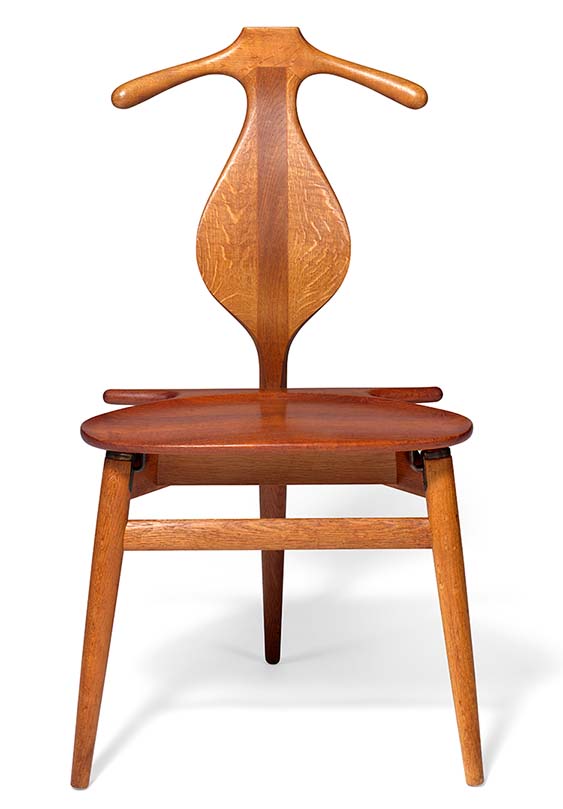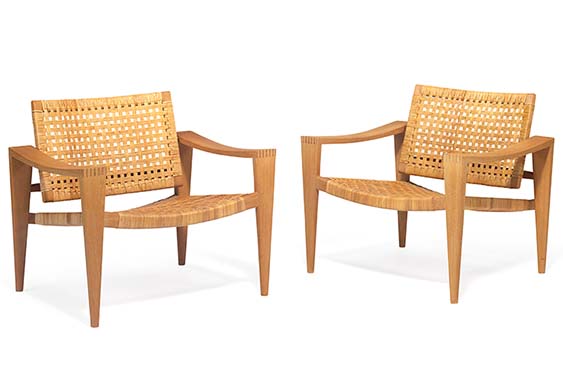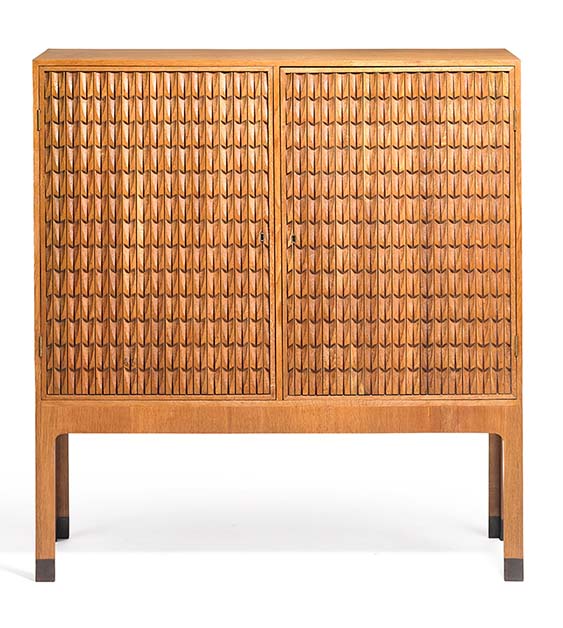Wegner’s Wonders
There’s no getting away from Hans J. Wegner when looking back at the heyday of Danish furniture design. An unusually long list of his furniture classics is set to go under the hammer at the Live Auction on 29 September – including a rare version of the “Buck Chair” and the “Crocodile Cabinet” from 1950.
|
|
“The Good Chair Is a Task One Is Never Completely Done With!”The words are Hans J. Wegner from 1992 as he looked back on a long life devoted to furniture design. For him, the perfect piece of furniture was a utopian idea. This view was reflected in a special work process, which he pursued throughout his life. Many of his pieces served as archetypes, which he would later further develop into other variations. So, we find echoes of the “China Chair” in the “Y-chair”, and the shell design and folding furniture was a theme he returned to again and again. Wegner was not afraid to experiment. He saw each experiment as a step along the way and viewed errors of judgement as part and parcel of the creative process. He threw himself into the design of the “Buck Chair” in the 1950s, and the series ranges from the most widespread “Sawbuck Chair” to several rare prototypes for cabinetmaker Johannes Hansen. In 1959, he had progressed to the oak chairs up for auction, which have not previously been seen on the auction market and differ from the other designs by virtue of their powerful visual expression, their tapered wedge-shaped legs and the absence of crossbars between the legs. The chair was presented at the Cabinetmakers’ Guild Exhibition in the year of its creation and has been owned by architect and royal building inspector Svenn Eske Kristensen. |
The Back of a CrocodileA piece of furniture that looks like the skin on a crocodile’s back might sound strange at first. This is nevertheless the case with another of Hans J. Wegner’s gems at the design auction in Copenhagen, a cabinet which, with its beautifully carved doors, is one of his rarer pieces of furniture. Designed and made for the Woodcarvers’ Guild Exhibition in 1950, the Crocodile Cabinet is evidence of the high demands that Wegner placed on himself and those he worked with. Wegner originally trained as a cabinetmaker in his hometown of Tønder. His lifelong interest in wood as a material started from a young age when he carved small figures out of wooden blocks used by his father, a shoemaker, for shoe models. Wegner mastered the use of tools early on, developing his unique sense of aesthetics, form and texture over time. With its beautiful ornamentation, the Crocodile Cabinet up for auction draws parallels to the figures Wegner carved in his youth. |
|
|
About “the Master of the Chair”
The story of Wegner is also about the shoemaker’s son from Tønder. He worked as an apprentice for Stahlberg, the local master cabinetmaker, and on completion of his training in his hometown, he headed to Copenhagen in 1935 to do his military service. Here, he visited the Cabinetmakers’ Guild Exhibition, a visit that made him realise he had to improve his skills. Wegner was accepted into Kunsthåndværkerskolens Møbelskole (Denmark’s School of Art and Design) at the Academy of Fine Arts in 1986, but he never actually qualified as a furniture designer as he was hired by Erik Møller and Arne Jacobsen in 1938 to design the furniture for the new city hall in Aarhus.
Wegner’s dual background gave him his in-depth feel for the natural character of wood and his unique sense of design. Not only did he abide by principles of aesthetics and craftsmanship, but his furniture was also made on the basis of in-depth analyses of body positions. Wegner created the idiom of his day in the 1950s and stands as one of the most significant and productive designers in Denmark. He developed his distinctive design as a combination of modern functional forms and old Danish traditions of craftsmanship. The result is a wide range of furniture that exudes poetry, energy and imagination – and which remains on the wish lists of many design enthusiasts around the world. Together with his colleague Finn Juhl, he put Danish furniture design on the world map, and the two became the most important exponents of “Danish Modern”.



